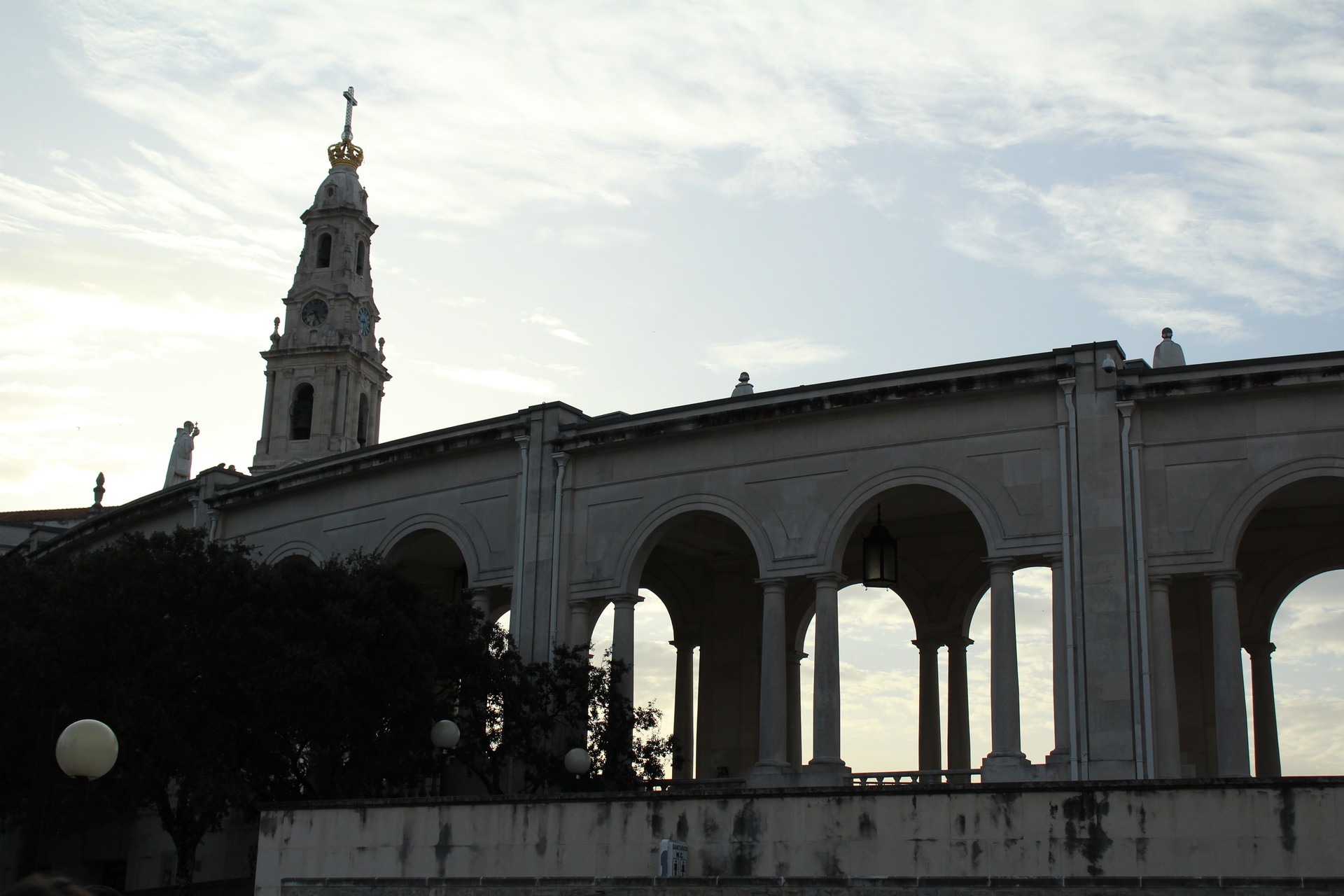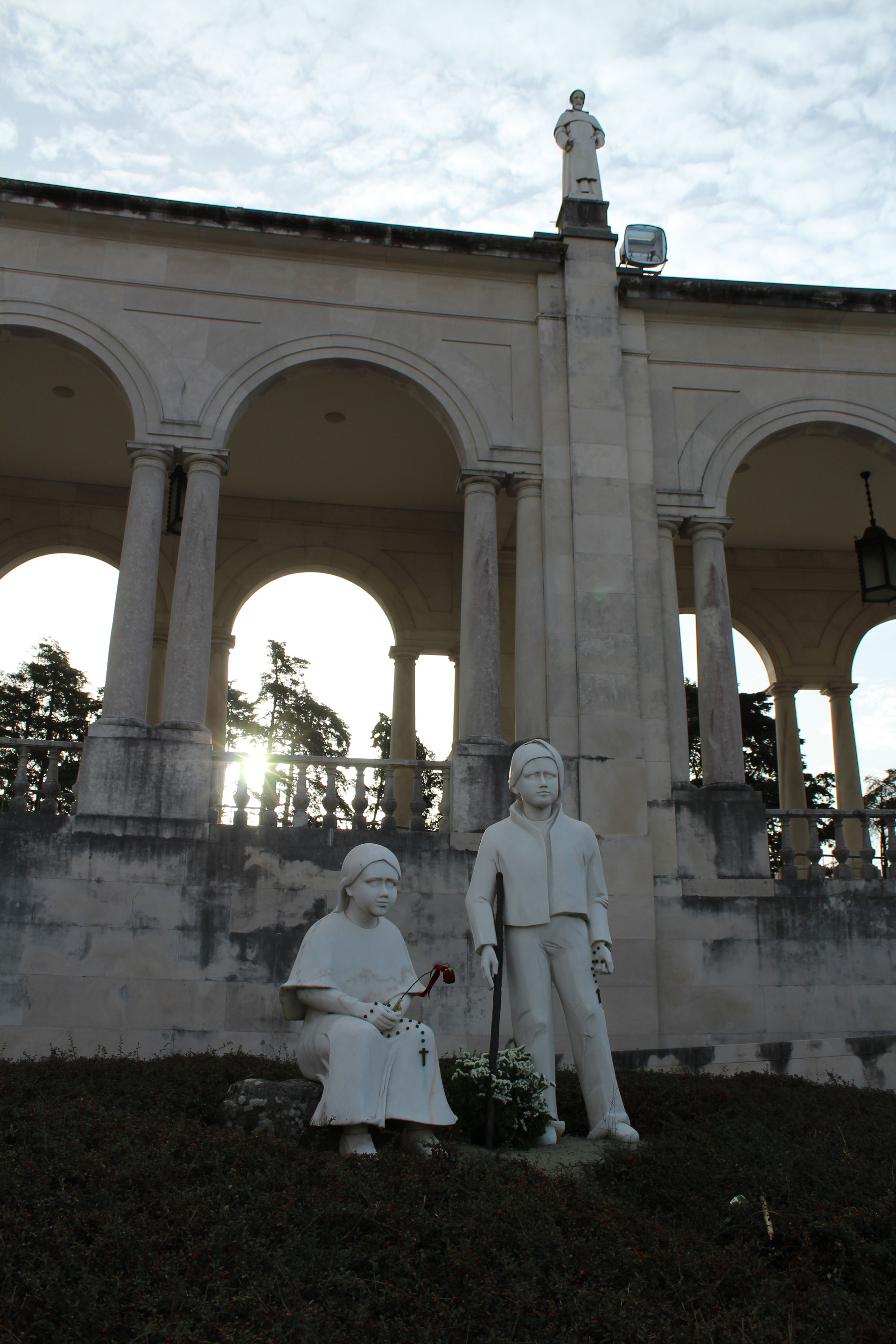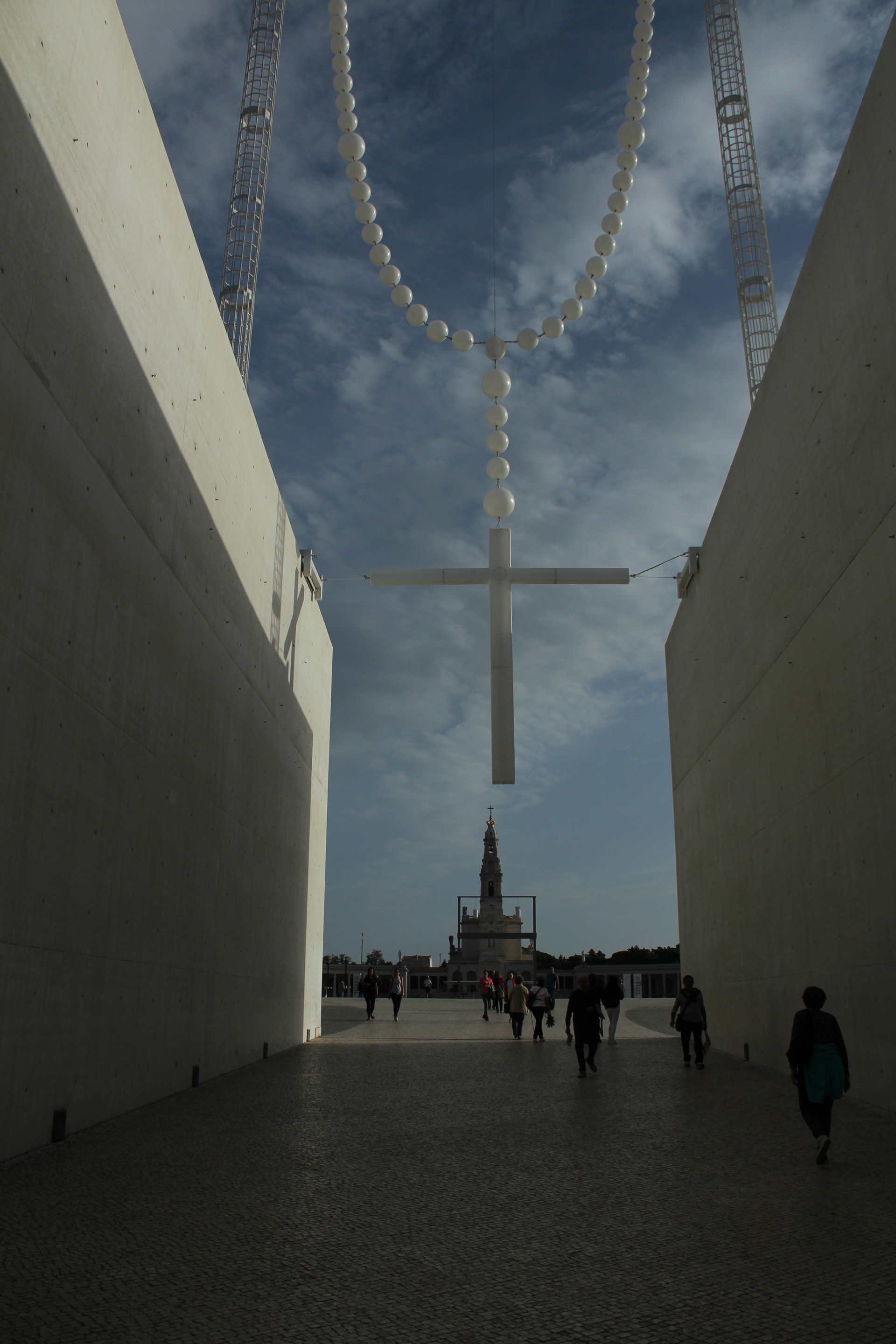Fatima Sanctuary
- Address: Santuario de Fátima
- Tags:
 What to see Fátima,
Fátima,
Portugal
What to see Fátima,
Fátima,
Portugal
- Telephone: 249 539 623
- Website: www.santuario-fatima.pt
The mecca of religion in Portugal
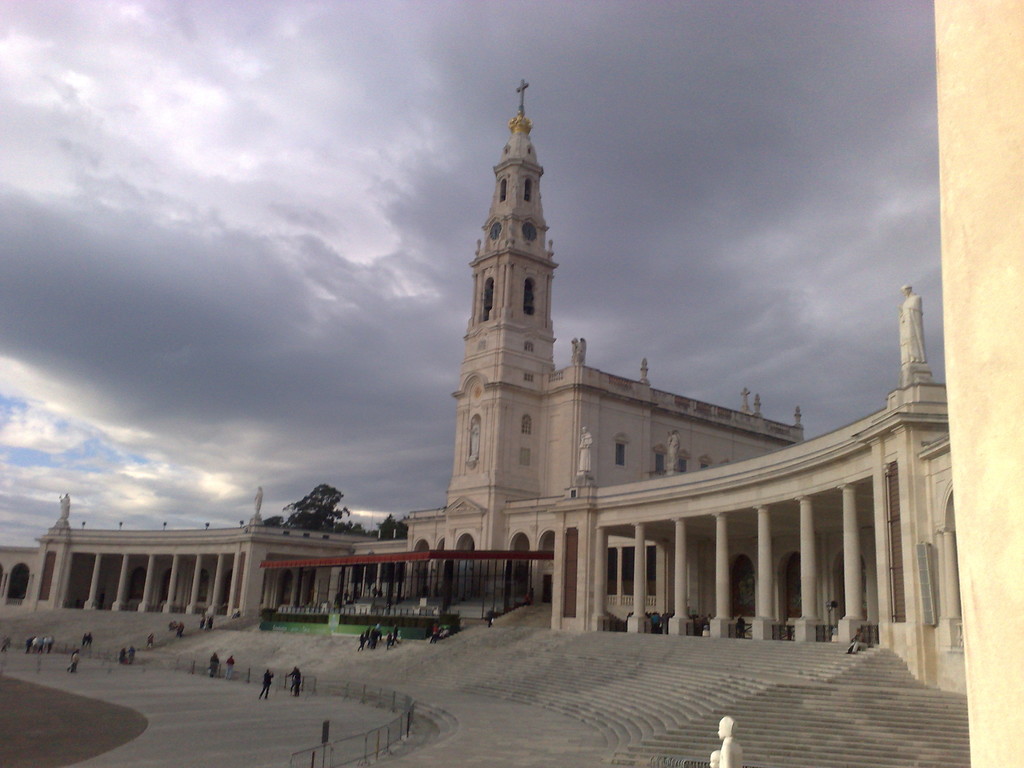
Let's continue our journey through Portugal and today I am going to talk about the mecca of religion in Portugal. I speak, without doubt, about Fatima.
It's difficult not to know what Fatima is since it is in one of the most important religious places of the world.
A little history...
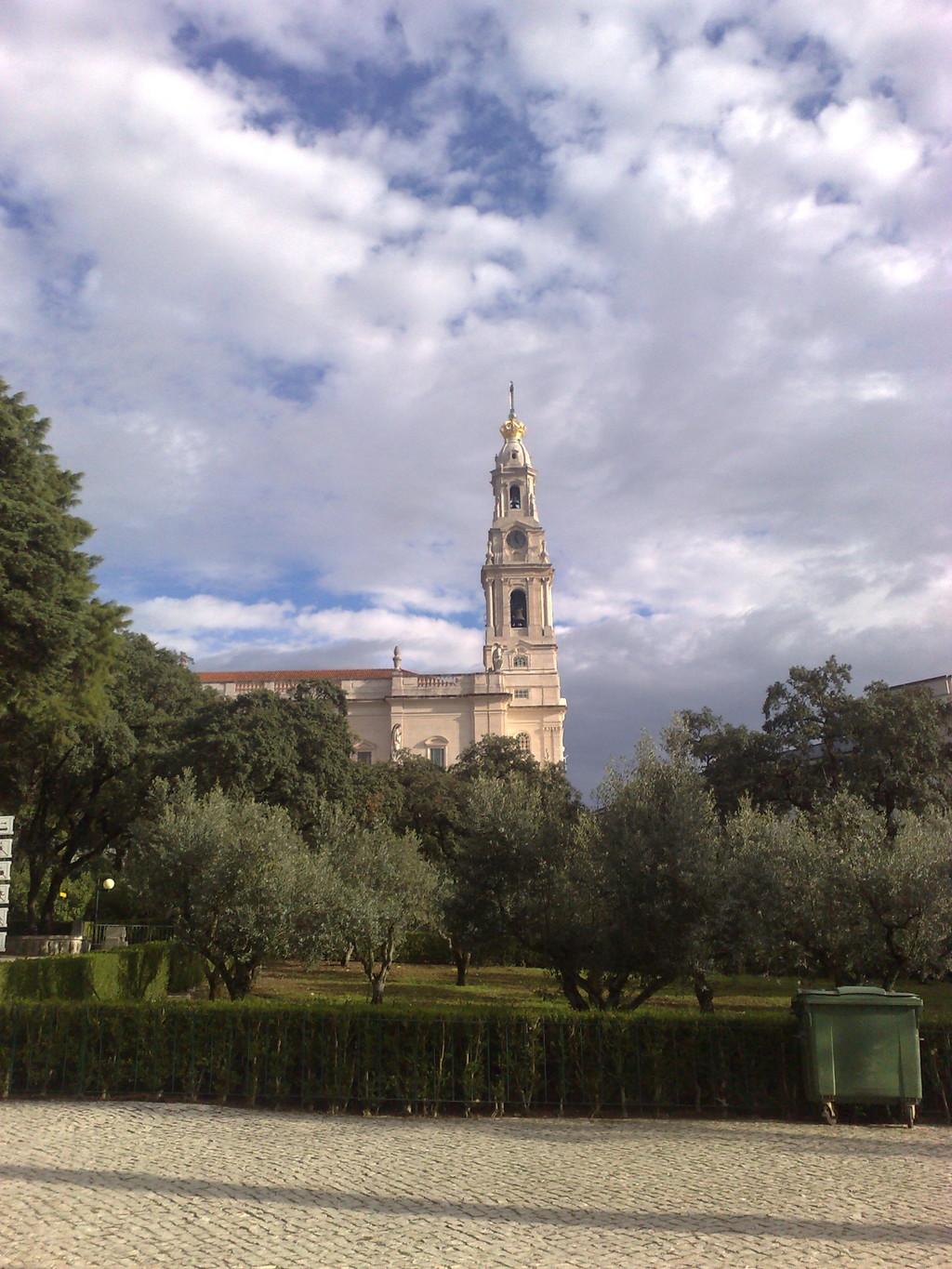
The origin of the religious tourism in Fatima began in 1917 (the centenary will be fulfilled in 2017) when three shepherds called 'Lucía de Jesús' and his cousins, 'Francisco' and 'Jacinta Marto' were 10, 9 and 7 years old, respectively. The Virgin appeared in front of them in the small Parish (equivalent to a village or neighbourhood) of 'Covas de Iria' in Fatima.
In her first appearance she indicated to them that they would need to pray a lot, since she would return to appear before them in a few months in the same place. It happened, and in another one of the appearances she indicated to them that they should build the basilica and the several places that she continued to explain.
The devotion to the Virgin of Fatima is not limited only to Fatima, any traveller that journeys through Portugal will see fountains, tiles, chapels and churches dedicated to the Virgin of Fatima or as you say in Portuguese "a Nossa Senhora de Fátima" (to our Lady Fatima)
How to get there
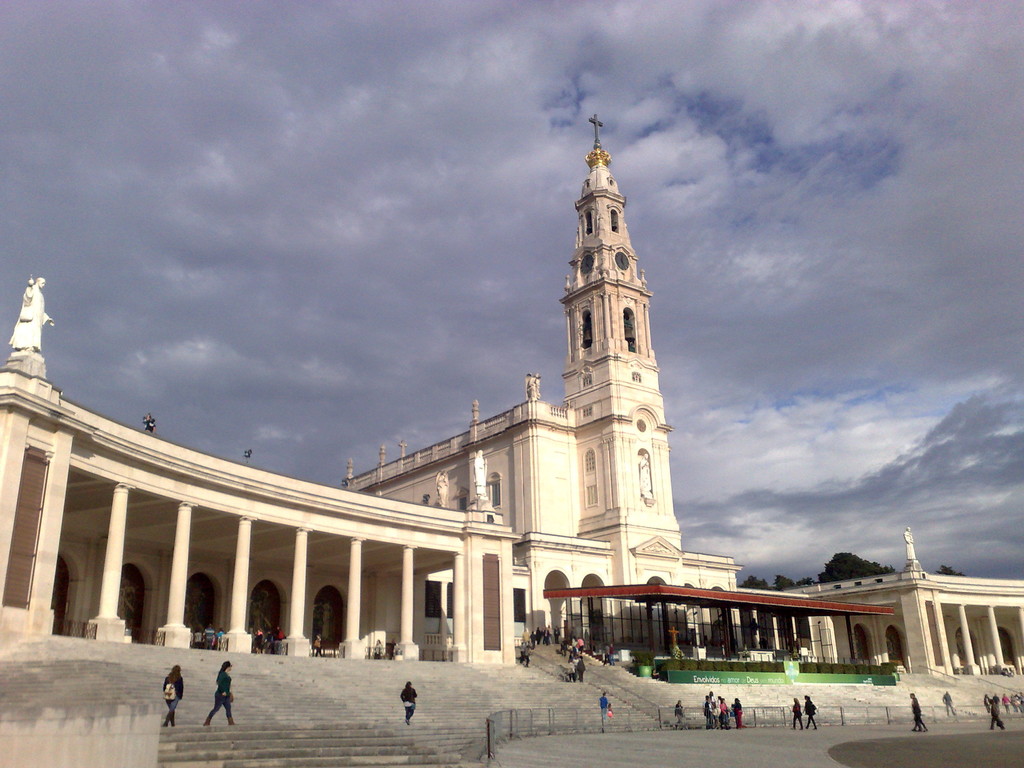
There is a train station but it is very far (exactly 23 kilometres away) and despite having the name 'Fatima' you will find it located in 'Chão de Maçãs'. If you do decide to take the train then you can catch a bus from the station.
Also, due to the importance of Fatima there are bus stops from the main cities like Lisbon and Porto, also Leiria and Coimbra, although it seems expensive for the short distance that it is. In the case of Coimbra, they charge around 10 euros for the journey between Coimbra and Fatima which is around 80 km and it costs the same to go to Lisbon which is 200 km.
If you go via the motorway, the IC9, the IP1, the N133 and the N356 are the motorways that are the closest to arrive. You have to pay to use some so look carefully for alternatives and calculate if it is worth taking them or not. Normally, the Spanish take them but the Portuguese always know where to go, via the domestic routes that are always free.
Giving that I have explained several hiking articles, without a doubt I must also explain the way to Fatima. If you go North towards Fatima, you basically take the route towards Santiago in the opposite direction, although you will divert towards the West where you will find Fatima. The same way as if you were coming from Lisbon.
Due to the fame of the route there are other alternatives that exist from the main Portuguese cities which are easier. If you want to do it, contact the Tourism office in the city where you can find and ask questions or look at maps on websites such as Wikiloc.
The Sanctuary
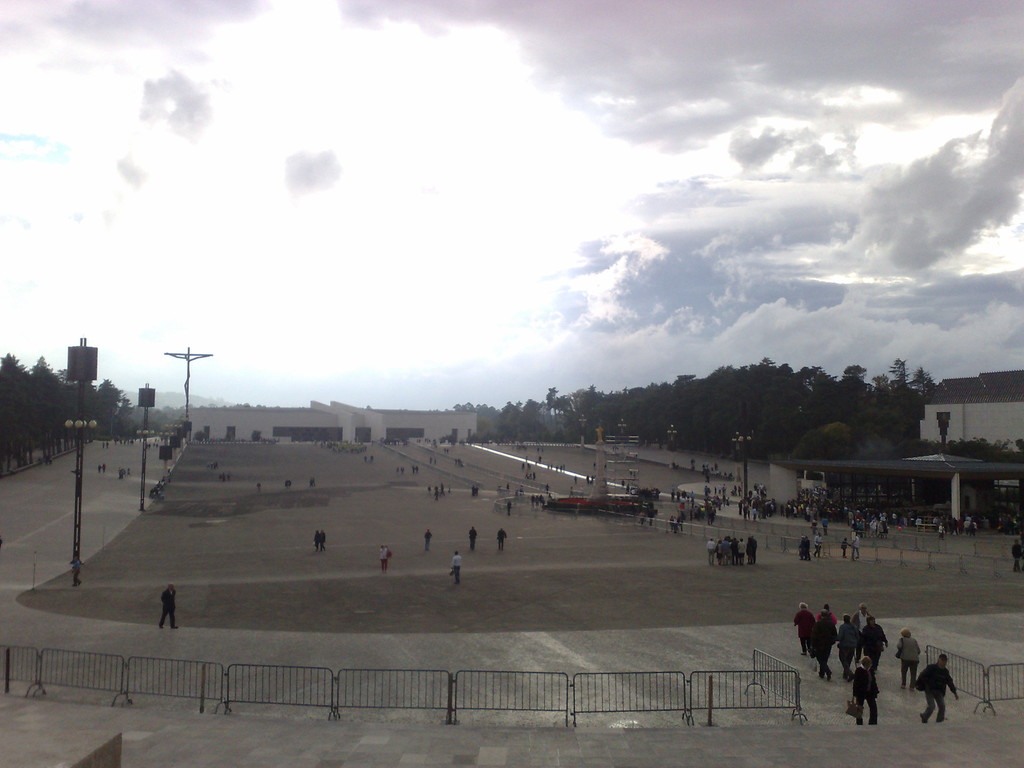
There are various parts that I will continue to explain:
- Chapel of the apparition (Capelinha das aparições in Portuguese). It was the first place that was built in 'Covas da Iria' and the heart of this place. The image of the Virgin can be found next to the chapel in the exact place of her apparition. The chapel was destroyed in 1922 and reconstructed a short while after. It was improved in the 80's due to several visits from Pope John Paul II who made various journeys to the site. Also, it is the final site of which the Pilgrims who do the 'Fatima Pilgrimage' arrive at.
- The square of the Basilica (or esplanade in Portuguese). It is the place that is shown in the fourth photo. It is a giant square, its size is like this due to the amount of people that meet here on certain dates of the year, especially between May and September.
- The Virgin of Fatima Basilica (Basílica da Nossa Senhora do Rosário de Fátima in Portuguese). Along with the square, it is the place that attracts the most attention and was actually under construction until the end of 2015, so I could only see a part of the interior. Due to the large numbers of followers that meet there every year after the apparitions of the shepherds, it was decided in 1928 to build this basilica. Of a baroque style, it was built by a Dutch architect, Gerard Van Kriechen and continued by the Portuguese architect, João Antunes.
Stone from the region was used for the Basilica, precisely from Moimento and the altars were made from marble from Estremoz, Pero Pinheiro and Fatima. Measuring 70. 02 metres with a width of 37 metres. It is made up of 15 altars dedicated to the 15 mysteries of Fatima.
In the four interior corners you can find the statues of the great Apostles of the Rosary and of the devotion to the Immaculate heart of Mary which are Antonio Maria Claret, Santo Domingo de Guzmán, San Juan Eudes and San Esteban, King of Hungary.
You can also find the graves of Francisco, Jacinta and Lucia, the Shepherds in the Basilica and the mortal remains of D. José Alves Correia de Silva, first Bishop of Leiria, in the Presbytery, transferred after its restoration in the year 1920.
- Monument to the Immaculate Heart of Jesus. You can see it slightly in the fourth photograph. In the centre of the square you will find a statue dedicated to the Immaculate heart of Mary, created by Father Thomas McGlynn with indication of Sister Lucía (the Shepherdess was later a nun). The reasoning for this monument is that the message of Fatima also talks about the love of Jesus and of God.
- Basilica of the Holy Trinity (Basílica da Santissima Trindade in Portuguese). It was a more modern church and in 2012 was named 'Younger Basilica', which you will find at the end of the square on the opposite side to the other Basilica.
Construction began in 2004 and was finished in 2007, the work is of the Greek architect Alexandros Tombazi. Inspired by Byzantine art and of the Orthodox church, it is the fourth biggest Christian temple of the world.
- Other places. You can visit the Parochial Church of Fatima, which is a normal church without anything special, beyond which the three shepherds were baptised.
- Also, you can visit the cemetery of the Municipal as this was the first place that the bodies of two of the shepherds were buried. There are also various museums that I could not visit where there are some people guarding the houses of the shepherds, another one of wax where waxed religious figures are exhibited and finally the museum of Aljustrel that imitates the familiar life in the time of the apparitions.
With this review I have more or less shown you all of the places of Fatima and now I will give you some recommendations. Would I recommend it? As a place of passage to Lisbon or to another city yes, as a famous place that one can go to but at the same time it is nothing out of this world.
I am not religious, so if one believes in God and the apparitions (since one can believe in God but not in this pantomime) it is different to qualify this place as a must-visit or not.
However, like the majority of things (not everything) they were made in the XX Century, it doesn't have the same charm. It is also beautiful to see such a big square and above all, in low season it is practically deserted.
The rest of the town is your typical tourist town. Fatima has 10, 000 inhabitants and the majority of them live off the exploitation of the apparitions of the Shepherds. You can find an infinity of places to buy souvenirs and other things around and it might be a good idea to buy them here as there is a lot of competition and therefore, good offers.
At the same time, this place does not offer anything out of this world. It is both a beautiful and privileged place, like Lourdes in France or the Franco's Monument to the fallen (which I am not in favour of what it represents but they are in precious places).
It was inconvenient that I could not see part of the interior due to the restoration works that did not finish until the end of 2015 but I didn't miss anything extraordinary.
Also, I should mention that the average age of the people that visit there is principally old people, there are few young people and we went there as an excursion with ESN.
In short, the basilica could be worth a visit if you are in Portugal for many months or you are passing through to Lisbon, Santarém or to another city but in itself, one does not miss out on anything special and nothing would happen if you were not to see it, apart from the place being well known.
And all of these places take advantage of religious fervour but at the same time have little to show. You should go if one wants to visit religious monuments that have various monasteries and convents, some UNESCO World Heritage sites or beautiful and religious cities like Braga.
Photo gallery
Content available in other languages
- Español: La Meca de la religión en Portugal
- Italiano: La Mecca della religione in Portogallo
Rate and comment about this place!
Do you know Fatima Sanctuary ? Share your opinion about this place.




